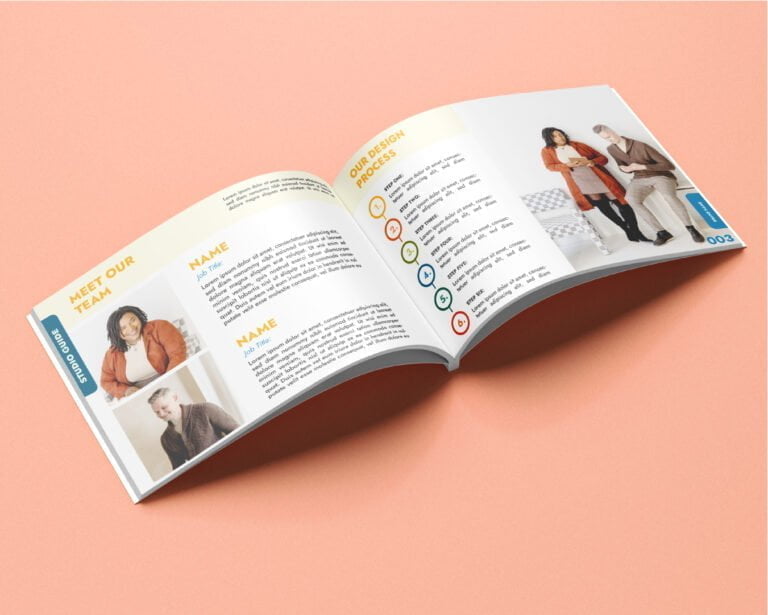User experience (UX) and SEO might seem like different players, but they’re actually teammates working towards the same goal: a successful website. Back in the day, stuffing keywords was enough to climb search engine rankings, but now Google’s smarter algorithms demand more. They want your site to not only have the right words but also offer visitors a smooth ride. Think of it as making sure your online house is easy to navigate and comfy for guests – that’s good UX – while also ensuring it can be found on a map – that’s where SEO comes in.
Combining UX with SEO isn’t just smart; it’s necessary for standing out in today’s digital jungle. Websites that nail this combo get more traffic, keep folks around longer, and generally kick more butt online.
Key Takeaways
Understanding the symbiotic relationship between UX and SEO is essential for creating websites that not only rank well but also provide a satisfying user experience.
Incorporating key design elements that improve UX can have a positive effect on SEO, such as faster load times, intuitive navigation, and mobile responsiveness.
A website’s SEO rankings are significantly influenced by user experience factors; sites that cater to user needs and preferences are more likely to climb the search engine results pages (SERPs).
Achieving website success requires a strategic approach that aligns both SEO and UX goals, leading to a more cohesive and effective online presence.
With mobile traffic dominating the internet, optimizing for mobile is no longer optional but a critical aspect of both UX and SEO strategies.
Google’s Page Experience update underscores the importance of UX in SEO, making it imperative for site owners to pay attention to new metrics and adapt their content strategies accordingly.
Unveiling the Relationship Between UX and SEO
User Satisfaction
User satisfaction is a core element of both UX and SEO. When users enjoy their time on a website, they are more likely to stay longer, explore more pages, and return in the future. This behavior sends positive signals to search engines like Google.
A satisfied user typically finds what they’re looking for quickly and easily. If your site provides this experience, it can lead to higher organic search visibility. For example, if visitors find useful content on your site that answers their questions or solves their problems, they may share it on social media or link back to it from other sites.
These actions create natural backlinks which are crucial for SEO rankings. Moreover, repeat visits indicate that users trust your site as a reliable source of information or services.
Click-Through Rates
Click-through rates (CTR) have an indirect relationship with how user-friendly a design is. A clear layout with easy navigation encourages clicks whereas confusing designs drive people away.
When you optimize your website’s design for usability, you make it easier for visitors to find what they need without frustration. As CTR improves due to better design, search engines take notice because high CTR often means content is relevant and valuable.
Take an online store as an example: if product descriptions are clear and checkout processes smooth, customers will complete purchases more often leading to improved CTR from search results pages.
Google’s Emphasis
Google has made it clear that user experience matters when determining rankings. They continuously update algorithms focusing on providing users with helpful responses quickly.
Sites that load fast and look good on mobile devices tend to rank higher because these are key components of good UX according to Google’s standards. Features like AMP (Accelerated Mobile Pages) show Google’s commitment towards enhancing mobile experiences which tie into both UX and SEO performance.
Remembering these points helps us understand why investing in a seamless user journey can boost our position in SERPs (Search Engine Results Pages). It also emphasizes the importance of staying up-to-date with Google’s evolving guidelines related directly or indirectly to user experience elements.
Design Elements in UX Enhancing SEO
Site Navigation
Good site navigation helps users and search engines. It makes finding information easy. Well-structured menus mean better indexing by search engines like Google.
Imagine a library with books everywhere. If there’s no system, finding a book is hard. That’s how users feel on poorly organized websites.
Clear categories and subcategories guide visitors smoothly. They find what they need faster. This structure also lets search engine crawlers understand your website layout.
Bullet lists are great for showing benefits of good navigation:
Users stay longer.
Search engines rank the site higher.
Information is easier to find.
A simple menu with clear labels works best. Avoid confusing names or too many options.
Responsive Design
Responsive design means your website looks good on any device: phones, tablets, laptops. It’s crucial because more people use mobile devices to go online now than ever before.
If a site doesn’t work well on phones, people leave quickly—this increases bounce rates. High bounce rates can hurt SEO rankings because they suggest that the content isn’t satisfying user needs.
But when sites adapt to screen size, users stick around longer and explore more pages—good news for SEO!
Think about reading this article on your phone versus a computer—it should be just as easy either way.
Visual Hierarchy
Visual hierarchy guides viewers’ eyes through content in order of importance—like big headlines first then smaller details after that.
It helps users get key messages fast without being overwhelmed by text or images all at once.
For example, think about bold titles—they grab attention right away! Then subtitles break up sections so you can skim if you want to find specific information quickly.
Search engines notice when people interact more with content—that’s why visual hierarchy boosts SEO too! Content becomes discoverable which means it gets seen—and shared—more often.
UX Impact on SEO Rankings Explained
Page Speed
Fast-loading pages are crucial for user satisfaction. When a website loads quickly, users can find what they need without waiting. This makes them happy and more likely to stay on the page.
Google uses page speed as a ranking factor. A slow site may appear lower in search results. Fast sites have a better chance of ranking high.
Engagement Metrics
User engagement shows how people interact with your site. High engagement often means good content and usability.
Search engines look at metrics like time on site and bounce rate to judge quality. Better user experience leads to higher engagement, which can improve SEO rankings.
Error-Free Pages
Pages without errors provide a smooth user experience. Users trust these sites more and are less frustrated when browsing.
Search engines prefer error-free websites too. They rank these sites higher because they seem reliable and well-maintained.
Synergizing SEO and UX for Website Success
Keyword Integration
Integrating keyword research with website design is crucial. It ensures content relevance and easy access. Start by identifying keywords your audience uses. Then, incorporate them into headings, text, and meta tags. But remember to keep the design intuitive.
For example, a site selling eco-friendly water bottles could use terms like “reusable bottles” or “eco water containers.” These should appear in product descriptions and titles without cluttering the page layout. Users find what they need quickly, boosting their experience.
Next comes making navigation simple. Menus should be clear and search bars easy to spot. When users can navigate without confusion, they stay longer on your site.
Content Alignment
Aligning content with user intent is key for engagement. Understand why people visit your site: information, purchase, entertainment? Tailor your content accordingly.
Let’s say you run a recipe blog; visitors likely want quick meal ideas or cooking tips. Your articles should match these needs directly at the top of the page where they’re easily seen.
Use headers that reflect search queries to improve readability too. This helps both users and search engines understand your page’s focus fast.
A/B Testing
Leveraging A/B testing refines UX and SEO strategies together effectively. Test different versions of a webpage to see which performs better in user engagement and search ranking.
Imagine changing an image size or call-to-action button placement on one version of a page while keeping another version unchanged as control group – this can reveal insights into user preferences that also impact SEO performance through metrics like bounce rate or time on site.
Regularly test various elements such as title tags or internal link structures too; it’s about finding what combination works best overall for both human visitors and algorithmic crawlers alike.
Mobile Optimization’s Role in UX and SEO
Mobile-First Design
Mobile-first design is now essential for SEO success. Websites must cater to mobile users first, as most searches happen on phones. Google rewards sites that work well on mobile with higher rankings.
A site designed for mobile loads quickly and looks good on small screens. It has clear text and easy navigation. This helps people find what they need fast.
Touch-Friendly Interfaces
Touch screens are everywhere. Phones, tablets, even some computers use touch. So, interfaces must be easy to use with fingers.
Buttons should be big enough to tap without error. Menus need to be simple to open and close with a swipe or a tap. Links should have space around them so you don’t hit the wrong one by mistake.
Good touch-friendly design keeps users happy. When users are happy, they stay longer on your site. This tells search engines your content is valuable.
Google’s Standards
Google sets rules for how websites should work on phones. These rules impact where your site shows up in search results.
Google looks at things like:
How long it takes your page to load.
If your content fits the screen without scrolling sideways.
If menus are usable on a phone.
Sites that meet these standards rank better than those that don’t.
Google’s Page Experience Update Decoded
Core Web Vitals
Google has set new benchmarks for assessing website performance. These benchmarks are known as the Core Web Vitals. They focus on three key aspects: loading, interactivity, and visual stability.
The first aspect is loading. This refers to how fast content appears on your screen. A metric called Largest Contentful Paint (LCP) measures this experience. For a good user experience, LCP should occur within 2.5 seconds of when the page starts loading.
Next is interactivity. This is about how quickly a site responds to user input, measured by First Input Delay (FID). To ensure users have a smooth experience, sites should aim for an FID of less than 100 milliseconds.
Lastly, we have visual stability, which deals with preventing annoying and unexpected movement of page content. The Cumulative Layout Shift (CLS) metric helps in measuring this stability; a CLS score under 0.1 is ideal for a great user experience.
HTTPS Security
Another critical factor in Google’s update is the role of HTTPS security in page scoring. Sites that use HTTPS protect their visitors’ data from intruders — it’s like sealing your letters before sending them through mail.
Having an HTTPS-certified site now contributes positively to its page experience score. This means if two sites were equal in other respects but one had HTTPS while the other didn’t, the secure site would likely rank higher.
Adapting to Update
To adapt well to these changes, webmasters must prioritize certain elements. Firstly, work on improving your pages’ load times where possible. You can do this by optimizing images or using faster hosting solutions.
Enhancing interactivity involves streamlining JavaScript execution and reducing server response times. Every millisecond counts towards creating responsive interactions for users navigating your website.
And for visual stability? Avoid inserting new content above existing text unless prompted by a user action. This will help keep everything stable as visitors read or interact with your webpage.
Content Strategies for a Dual Boost in UX and SEO
Informative Headings
Crafting headings that grab attention is key. They must be clear and to the point. Users often skim through content looking for valuable information. Subheadings break up text and make it easier to read. They also help with SEO when you include keywords.
Good headings guide readers down the page. Think of them as signposts that tell what’s ahead. For example, a heading like “5 Tips for Better Sleep” tells you exactly what to expect.
Multimedia Balance
Using images, videos, and graphics can make your content more engaging. But too many multimedia elements slow down your site. Slow sites frustrate users and hurt rankings.
To keep things balanced:
Choose quality over quantity.
Compress images before uploading.
Use multimedia that adds value to the text.
Remember Google’s Page Experience Update? It rewards websites that load quickly. So keep an eye on how media affects your site speed.
Clear CTAs
A call-to-action (CTA) should stand out and tell users what to do next. It could be “Sign Up,” “Learn More,” or “Buy Now.” These prompts are not just important for guiding users but also signal relevance to search engines.
For instance, if you’re selling eco-friendly water bottles, a CTA like “Shop Sustainable Bottles” ties back into both user intent and keyword optimization seamlessly.
Addressing UX Metrics and SEO Outcomes
Bounce Rate
Understanding bounce rate is key. It shows how often people leave after viewing just one page. A high bounce rate could mean content doesn’t meet user needs or expectations. To improve, consider these steps:
Check if your pages answer the search query.
Make sure your site loads fast.
By analyzing this data, you can tweak content to better align with what users want.
Another way to use bounce rate is by looking at the time spent on a page. If it’s short, maybe the information isn’t engaging enough or hard to find. You might need clearer headings or more interesting openings.
Conversion Rates
Next is tracking conversion rates. This number tells you how many visitors do what you want them to do—like buy something or sign up for a newsletter. High conversion rates usually mean good UX and SEO practices because they show that users are finding value in your site and taking action.
To boost conversions:
Simplify forms.
Use strong calls-to-action (CTAs).
Remember, even small changes can lead to big improvements in user experience and SEO outcomes.
Heatmaps Analysis
Finally, let’s talk about heatmaps. They show where users click, move, and scroll on your site pages—their digital body language so to speak.
Look for patterns like where they stop scrolling or don’t click expected links—it might signal disconnects between design intentions and actual user behavior.
For example:
Maybe important buttons aren’t visible enough.
Or perhaps parts of a page are being ignored completely because they’re not engaging.
Using heatmaps helps pinpoint these issues so you can adjust layout for better navigation and engagement—a win-win for both UX and SEO!
Best Practices for Harmonizing UX with SEO
Clear Messaging
Clear communication is key in UX and SEO. Websites should aim to convey information without overusing keywords. This avoids keyword stuffing, which can hurt both the user experience and search rankings.
Users come seeking answers or solutions. If they find clear, direct content, they’re more likely to stay engaged. For example, a webpage about gardening tools should focus on tool benefits rather than repeating ‘gardening tools’ excessively.
Final Remarks
Diving into the UX and SEO blend, we’ve unpacked how user experience isn’t just about looks or feels; it’s a heavyweight in the SEO ring. Your takeaway? A seamless UX can give your site’s SEO a knockout boost. Think of it like a dance duo—when UX and SEO move in sync, your website waltzes up the search rankings. We’ve explored design finesse, mobile savvy, and content that sings to both users and search engines. And with Google’s Page Experience Update in play, the spotlight’s on sites that deliver top-notch experiences.
Now, roll up your sleeves and tune up your website. Remember, every click, every scroll tells a story—make sure yours is a page-turner that keeps both visitors and search engines hooked. Ready to jazz up your online presence? Get cracking on those best practices and watch your site climb to stardom. Let’s make the web not just searchable, but enjoyable—one user experience at a time.
Frequently Asked Questions
How are UX and SEO related?
UX influences how easily users interact with your site, which in turn affects SEO because search engines favor sites that provide a good user experience.
Can design elements really boost my site’s SEO?
Absolutely! Design features like readability and navigation ease can significantly improve your site’s rankings by making it more user-friendly.
What role does mobile optimization play in UX and SEO?
Mobile optimization is crucial. It ensures your website is accessible on smartphones, which improves the user experience and meets SEO standards for mobile-friendliness.
How did Google’s Page Experience Update change things?
Google now evaluates the overall feel of browsing a page—like loading speed and interactivity—which directly ties the user experience to search rankings.
What content strategies benefit both UX and SEO?
Creating clear, engaging, and valuable content caters to readers’ preferences while also ticking off boxes for search engine algorithms.
Are there specific UX metrics that influence SEO outcomes?
Yes! Metrics like page load time, bounce rate, and session duration give insights into the user experience quality which impacts your site’s visibility on search engines.
Do you have any best practices for aligning UX with SEO effectively?
Focus on creating an intuitive structure with fast-loading pages; this harmony between UX design principles and technical aspects will uplift your site’s performance in both areas.









